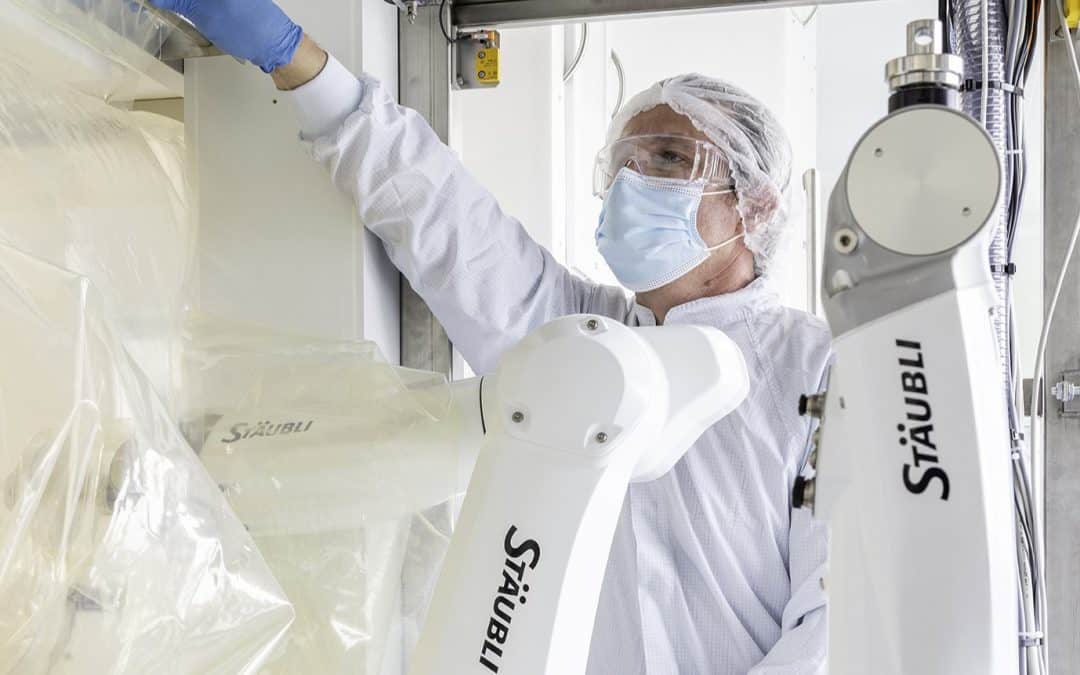A single-use isolator for aseptic filling: how does it work?
In the pharmaceutical industry, aseptic filling is a critical process that ensures the production of sterile drug products free from contamination. This process requires meticulous control of the environment to prevent any microbial or particulate contamination during the filling and stoppering stages. Traditionally, this has been achieved using fixed isolators, which provide a controlled environment for these sensitive operations.
The introduction of single-use isolators into aseptic filling lines marks an advancement. Unlike traditional systems, single-use isolators are designed to be disposed of after each batch, significantly reducing the risk of cross-contamination and simplifying the validation process. This innovation is particularly transformative when integrated into high-volume sterile drug manufacturing, as it allows for quicker implementation, easier disassembly, and consistent reproducibility without the need for constant revalidation.
Since 2019, GTP Bioways has been at the forefront of this revolution, offering comprehensive drug substance manufacturing, formulation & aseptic filling services powered by a state-of-the-art single-use isolator technology. Our 700-square-metre cGMP manufacturing unit, built in compliance with European and global drug manufacturing requirements, underscores our commitment to excellence.
In this blog post, we will discuss the innovative integration of single-use isolators into aseptic filling lines for efficient, contamination-free production, detailing the technical advancements, challenges addressed, and the benefits of combining single-use isolators with automation technology in sterile drug manufacturing.
Implementing single-use isolators in an aseptic filling line for efficient and contamination-free production
Single-use isolators for the pharmaceutical industry aren’t by themselves a true innovation. There are several companies that sell this type of system for the contained implementation of hazardous molecules, so bringing in a single use isolator isn’t a technical prowess in pharmaceutical industry. However, integrating a single-use isolator into a sterile drug filling line for high-volume batch production constitutes a significant technical advancement. It’s important to know and master the isolator as well as all the in and out transfer to put together technical specifications that perfectly respond to the needs of sterile drug manufacturing, in particular the implementation of a laminar or unidirectional flow at the filling and stoppering stages.
The design of the isolator must be flawless to prevent the need for frequent adaptations and revalidation, ensuring it operates simply and reproducibly. It must operate in a simple and reproducible way to allow for quick implementation and disassembly, to get rid of the constraints listed above. It should also allow for secure and controlled operation to be permitted for use in class A environments. Proficiency in industrial environments and familiarity with the challenges of confined aseptic filling are crucial for implementing such single-use isolator in an aseptic filling line.
Tailoring single-use solutions to containment needs: Why single-use isolators are critical for filling and stoppering
In a typical filling line, not all isolators (container and stoppering system sterilisation, equipment loading, pre-filling preparation/feeding, filling/stoppering, capping), pose the same contamination risks or require identical handling procedures. The filling/stoppering isolator, where products are filled and stoppered, carries the highest risk of environmental contamination and is therefore the prime candidate for single use.
Isolating the filling/stoppering isolator from the rest of the line during the filling and stoppering phases significantly limits contamination dispersion and enables disposal of the isolator afterward. Finally, if the crimping system used allows for the elimination of vial breakage during capping, there may be no need for a single-use isolator at this station.
Thus, the natural choice for a single-use isolator is the filling-stoppering isolator. At GTP Bioways, we have integrated a single-use isolator within a line comprising three other fixed isolators to address its specific needs, acknowledging its essential and vital role in maintaining the overall efficacy of the line.
Pioneering automation into single-use isolator for enhanced efficiency in aseptic filling
While designing our aseptic filling line, we identified several constraints that our single-use filling-stoppering isolator needed to address. Firstly, the isolator had to facilitate the insertion of containers, necessitating a minimum of two isolator gloves. Additionally, it was imperative to meet modern aseptic filling and stoppering standards. To this end, we selected 6-axis robots, which were crucial in minimising the risk of contamination in the filled units.
Although several leading companies provide filling lines utilising such robots, these are typically integrated within the critical filling environment and must therefore comply with Class A standards. From the outset, GTP Bioways’ objective was to position the robots outside the critical environment. There are several reasons for this:
- robot maintenance in the case of a failure or malfunction
- reducing manufacturing costs of the chosen robot, plus the possibility of implementing them in class D or C environments
- automating filling in order to control the filling and stoppering phases and limit the time when filled units stay open
- relying on recipes rather than format parts for the filling of any type of container
- SMED (Single Minute Exchange Design) system change
Therefore, we opted for a single-use isolator equipped with connection sleeves in order to carry out the robots’ tasks. This necessitated the implementation of highly reproducible, tight-clearance systems for attaching the robots’ arms, allowing for the assembly and disassembly of gripping, filling, and stoppering tools. These systems ensure repeatability of the filling and stoppering processes with minimal variability, and enable the precise introduction of a filling needle into a 6.25 mm collar, as well as the handling of 6 mm diameter syringe stoppers. We have developed technical specifications that meet all the sizing and handling requirements outlined in this list of constraints.
In conclusion, the integration of single-use isolators into aseptic filling lines represents a significant advancement in pharmaceutical manufacturing. This innovation addresses the critical need for efficient and contamination-free production of sterile drug products. By carefully addressing technical challenges and leveraging automation technology, such as 6-axis robots, we have overcome various constraints to enhance the efficiency and safety of the filling and stoppering processes.




